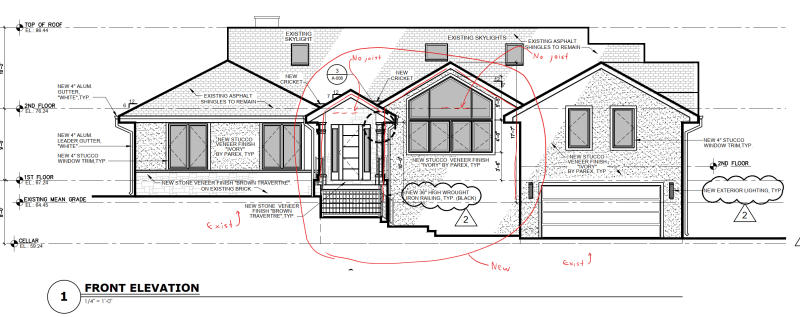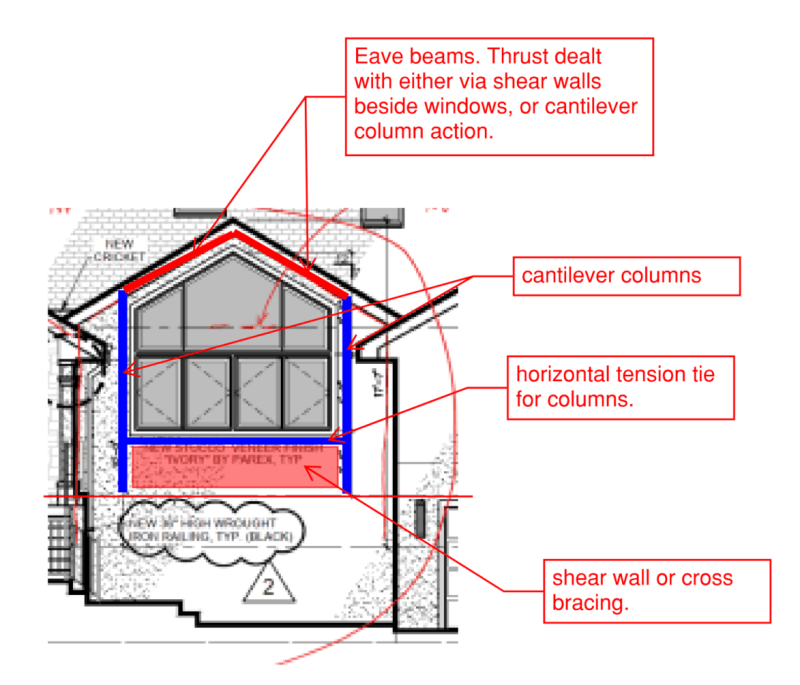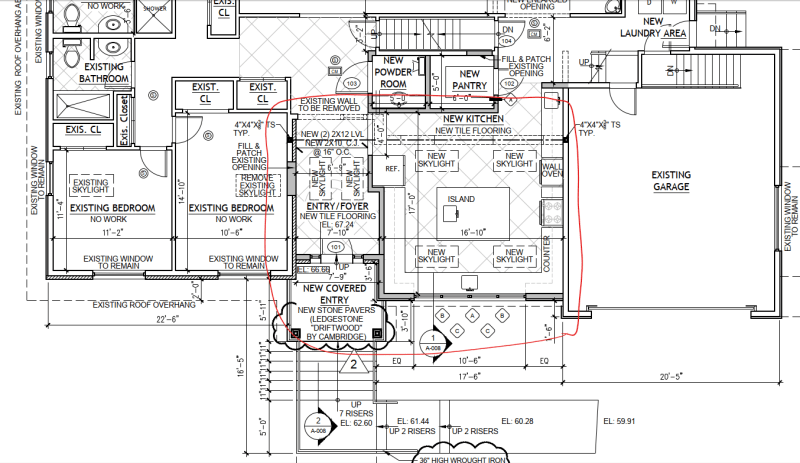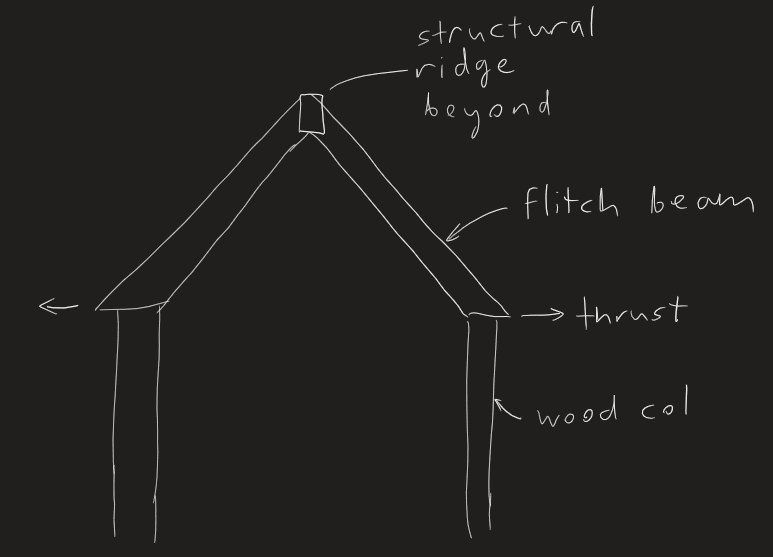I recommend framing conventionally (2x rafters, 2x ridge board) and design the adjacent structures to take the thrust.
I am reminded by the saying I believe attributable to Abe Lincoln:
"If you call a tail a leg, how many legs does a dog have?
The answer is 4. Just because you call a tail a leg, that doesn't make it a leg."
If you use periodically placed inverted steel chevrons (HSS sections or whatever), and you did a complete 3D analytical model, you would find the axial stiffness of the rafters to be greater than the flexural stiffness of the chevrons, and therefore would still transfer axial loads to the adjacent structures.
If you use a wood ridge beam spanning to a single inverted chevron at the end, you would find the axial stiffness of the rafters greater than the flexural stiffness of the ridge beam and inverted chevron combo, and therefore would still transfer axial loads to the adjacent structures.
If you used conventional framing, you can (conservatively) take the total horizontal thrust into either adjacent structure without a 3D model and disregard the relative stiffness of the adjacent structures. This would mean you would probably end up with cantilever steel columns at the entry. On the other structure (to the right in your elevation), you would add the load (with the appropriate load combination factors) for the design of the diaphragm and shear wall. This might sound a little messy, but, in the end, you would never have to think about this problem again and I would guess, the results would not be that onerous. If the owner doesn't want to pay for cantilevered columns at the entry, tell him/her the alternative would be ceiling ties.





